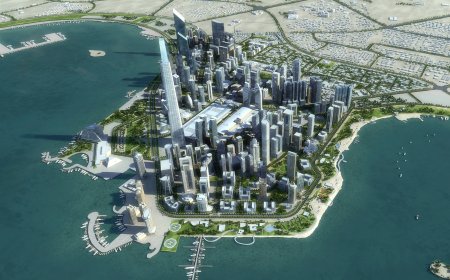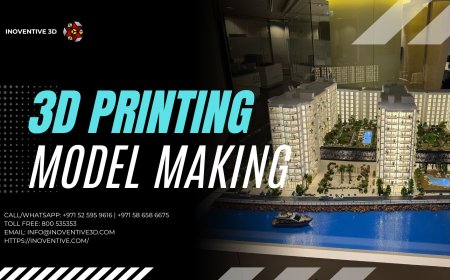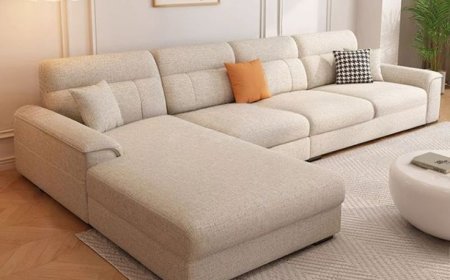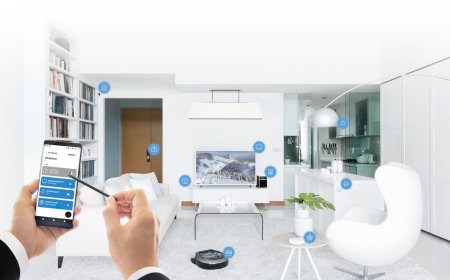Flat Panel: A Modern Solution for Efficient Lighting and Displays
The benefits and applications of flat panels in lighting and displays. Learn how flat panel technology offers energy efficiency, sleek design, and superior performance for homes and businesses

In todays fast-paced world, technology plays a vital role in how we live, work, and communicate. One of the technological advancements that have become increasingly popular across various industries is the flat panel. From lighting to display screens, flat panels offer a sleek, energy-efficient, and versatile solution that meets the demands of modern applications.
This blog explores what Flat Panels are, their types, advantages, common uses, and why they are becoming the preferred choice for businesses and homes alike.
What is a Flat Panel?
A flat panel generally refers to a thin, flat device used primarily for lighting or display purposes. The design focuses on a slim, space-saving profile that can be mounted easily on walls, ceilings, or other surfaces. Unlike traditional bulky fixtures or screens, flat panels provide a clean and modern look with enhanced performance.
In lighting, flat panels are often LED-based, providing uniform light distribution with minimal glare. In display technology, flat panels are used for televisions, monitors, and digital signage, replacing older bulky cathode ray tube (CRT) models with crystal-clear images and vibrant colors.
Types of Flat Panels
There are several types of flat panels depending on their application. Here are some of the most common types:
LED Flat Panel Lights
LED flat panel lights are designed to replace conventional fluorescent ceiling lights. They offer superior brightness, energy efficiency, and longer lifespan. These panels are commonly used in offices, schools, hospitals, retail stores, and homes.
They come in various sizes and shapes, including square and rectangular panels, to fit different ceiling grids and design preferences. The LED technology inside the flat panel ensures even light diffusion, reducing harsh shadows and providing a comfortable lighting environment.
LCD and OLED Flat Panels
For display purposes, flat panels include Liquid Crystal Display (LCD) and Organic Light Emitting Diode (OLED) panels. LCD flat panels use a backlight to illuminate liquid crystals that produce images. They are widely used in computer monitors, televisions, and smartphones.
OLED flat panels, on the other hand, consist of organic compounds that emit light when an electric current is applied. OLED technology allows for thinner, more flexible panels with better contrast, color accuracy, and viewing angles. This makes OLED panels ideal for premium TVs, smartphones, and other high-end display devices.
Plasma Flat Panels
Although less common today, plasma flat panels were once a popular choice for large television screens. They use small cells containing electrically charged ionized gases to produce images. Plasma panels offer rich colors and wide viewing angles but tend to be heavier and consume more power than LED or OLED panels.
Advantages of Flat Panels
Flat panels offer numerous benefits compared to traditional lighting and display solutions. Here are some key advantages:
Energy Efficiency
Flat panel LED lights consume significantly less energy than fluorescent or incandescent lighting. This energy-saving aspect helps reduce electricity bills and environmental impact. Similarly, modern flat panel displays such as LED and OLED consume less power compared to older CRT and plasma displays.
Space-Saving and Sleek Design
One of the most noticeable features of flat panels is their slim and lightweight design. This allows them to be installed in tight spaces or as part of minimalist interior designs without looking bulky or intrusive. Flat panels blend seamlessly into ceilings or walls, creating a clean and modern aesthetic.
Longer Lifespan
LED flat panel lights have a long operational life, often exceeding 50,000 hours. This means less frequent replacements and lower maintenance costs. Similarly, LCD and OLED panels are designed for durability, offering years of reliable use with minimal degradation in image quality.
Better Light and Image Quality
Flat panel LED lights provide uniform, flicker-free illumination that reduces eye strain and enhances comfort. In display applications, flat panels offer sharper images, higher resolution, and vibrant colors. OLED panels, in particular, provide deep blacks and high contrast ratios, enhancing the viewing experience.
Environmentally Friendly
LED flat panels do not contain mercury or other hazardous substances common in fluorescent lights. They are recyclable and contribute to lower carbon emissions due to their energy efficiency. This makes flat panels an environmentally responsible choice for both lighting and display applications.
Common Applications of Flat Panels
Flat panels are versatile and can be used in a wide range of settings. Here are some popular applications:
Commercial and Office Lighting
Offices, conference rooms, and retail stores benefit greatly from LED flat panel lights. They create bright, comfortable environments that improve productivity and customer experience. The flat design allows for easy integration into suspended ceilings and various layouts.
Healthcare Facilities
Hospitals and clinics require reliable, glare-free lighting for examination rooms, waiting areas, and operating theaters. Flat panel LED lights are ideal for these spaces, offering consistent light quality that aids medical professionals in their work.
Educational Institutions
Classrooms and lecture halls benefit from flat panel lighting by providing well-lit spaces that enhance concentration and reduce fatigue. Schools also use flat panel displays for digital signage and interactive learning tools.
Residential Use
Homeowners are increasingly adopting flat panel LED lights for kitchens, living rooms, and hallways due to their modern look and energy savings. Flat panel TVs and monitors have also become standard in home entertainment setups.
Digital Signage and Advertising
Flat panel displays are widely used for digital billboards, information kiosks, and menu boards in restaurants and malls. Their ability to display dynamic content in vivid colors makes them effective tools for marketing and communication.
How to Choose the Right Flat Panel
Choosing the appropriate flat panel depends on several factors including size, brightness, color temperature, resolution (for displays), and installation type. Here are some tips to consider:
-
For lighting, assess the room size and required brightness levels. Panels with adjustable color temperature offer flexibility for different settings.
-
For displays, consider the resolution and viewing distance. Higher resolution panels are better for close viewing, while larger sizes work well for distant audiences.
-
Check energy consumption and warranty to ensure long-term reliability.
-
Confirm compatibility with existing fixtures or mounts for easier installation.
Maintenance and Care
Flat panels generally require minimal maintenance. For lighting, regular dusting with a soft cloth keeps the surface clean and maintains brightness. Avoid harsh chemicals or abrasive materials that can damage the panel surface.
Display panels should be kept away from direct sunlight and extreme temperatures to preserve image quality. Use screen protectors or covers when necessary to prevent scratches.
Future Trends in Flat Panels
As technology evolves, flat panels are expected to become even more efficient and versatile. Innovations like flexible OLED panels, smart lighting with integrated sensors, and improved energy management systems are shaping the future of flat panel technology.
Integration with smart home and building automation systems will allow users to control lighting and displays remotely, customize settings, and improve energy management further.
Conclusion
Flat panels represent a modern, efficient, and stylish solution for both lighting and display needs. Whether you are upgrading your office lighting, installing digital signage, or looking for a sleek home entertainment screen, flat panels offer many advantages in energy efficiency, design, and performance.
With their growing popularity and ongoing technological advancements, flat panels are set to play a central role in the way we illuminate and visualize spaces for years to come.




























